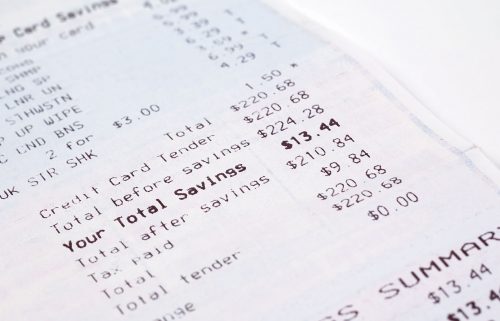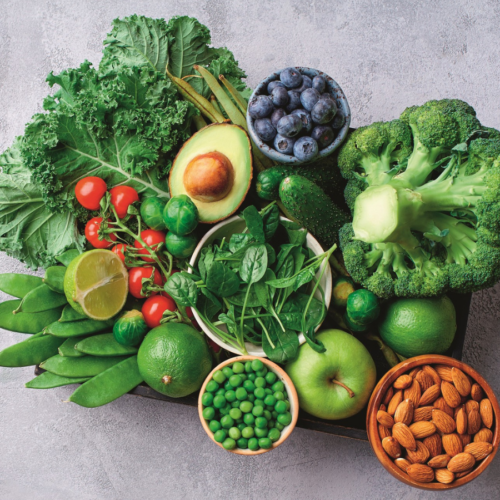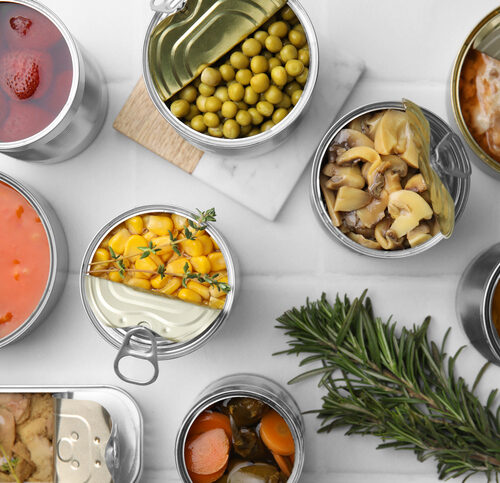
We explain the benefits to the wallet of having a disciplined approach and shopping with a list.
Reducing the number of trips you take to the supermarket each week is a sure-fire way to reduce your overall grocery spend. That is, assuming you have taken the time to write a proper grocery list.
Try to do the big weekly shop from memory alone and it’s almost a guarantee you will be back at the supermarket within two days, “just to pick up a few things”. Those ‘few things’ almost always cost around $30 and won’t include one vital ingredient you need for something you intend to make later in the week, necessitating another emergency dash to the supermarket to grab a few essential bits and pieces.
Stress less!
A decent shopping list is a stress buster. It allows you to make all the hard decisions before you leave the house. Peruse the promotional mailers and debate the relative advantages of 30 cents off or 10% extra for free from the comfort of your kitchen, with the pantry open, so you can look and see what you need instead of what is on special. Then write the list.
Having made all the decisions long before you get to the supermarket, you’ll be less tempted by in-store promotions. If it’s not on the list, you don’t need it.
Less stress equals better choices all round, resulting in more money left to spend on shoes or handbags or school fees or debt reduction or holidays… things that will improve your quality of life (and I do include shoes and handbags in that!).
Get the most out of your lists
- Keep a list of essential items hanging in the pantry. Remember to include fresh and frozen items, toiletries and cleaning products. Refer to it when making out the grocery list.
- File the essentials list in your computer. Print one each week and check off what you need. If you include prices then you can cost your week’s shop before you leave the house. Use the online shopping services for a basic price guide.
- When writing the week’s shopping list, check out the supermarket flyers and plan around specials and seasonal produce.
- Determine whether or not you are purchasing all your groceries at one place or whether you are shopping around. Write the name of the supplier next to items that need to be sourced elsewhere.
- Choose a day and time to shop and stick to it. If you run out of something, make do until the following week.
- Keep track of how much bread, milk, loo paper and laundry liquid you go through each week so you know how much to stock. Changes to the household – the arrival of a homestay student or a teenager away at camp – can be anticipated.
- Use a small whiteboard in the kitchen to record items that need replacing or are running low so they can be included on the grocery list.
The pitfalls of shopping without a list
- Overstocking: “Oooh, that seems cheap. I’m not sure if we have any at home so I’ll take 10 just to be on the safe side”.
- Wastage: “We might have a salad tomorrow so I’ll buy extra fresh stuff just in case”.
- Overspending: “Yikes, it didn’t seem like that much when I put it in the trolley!”
- Dumb choices: Buying junk food, small appliances, flat screen tvs because they are on special.
- Omitting important or needed items: “Oops, I forgot the bread and milk!”
- Degeneration of cooking skills due to lazy shopping: “We need to eat up those frozen pizzas/curries/pies I bought last June…”
Get organised
Identify a selection of dishes or recipe styles that are based around basic store cupboard items and keep a list of those dishes pinned inside the pantry as prompts. For example:
- Potatoes: Frittata, salad, soup base, veg for curried dishes
- Eggs: Pancakes, fritters, soufflé, frittata, omelettes
- Tinned tomatoes: Pasta sauce, soup, pizza topping, Mexican dishes
- Canned beans: Curries, salads, burger/rissole-type things, Mexican dishes
- Canned sweet corn: Fritters, chowder
- Flour: Breads, pancakes or crepes, tortillas, pastry
Feeling listless?
When you spot an item that you would really like to try, instead of just buying it on the off chance you might use it, write it down, along with the shelf price and consider it for next week’s shop. Then when planning next week’s meals you can weigh up whether or not you will actually use this exciting new thing, or if it’s likely to languish on the pantry shelves for months while you go off the whole idea.
Have a good look in the pantry. While there may not be much that screams “eat me, eat me!”, you may notice items that need using up, either because you have had them so long or because they are overstocked. Dig out some recipes and use what you have before buying anything else.
If you do decide to make a new dish, consider what it will cost. Are the ingredients in season at the moment? Is the meat you need on special? Should you wait to try the dish until you can buy the ingredients cheaper?
www.healthyfood.com










